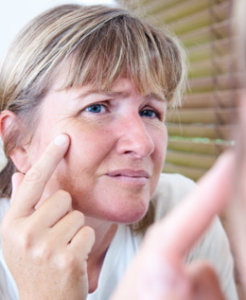Self Examination
This is a simple examination that you can perform at home, either with a partner or family member, or with the aid of two mirrors. This will allow you to become familiar with your skin and get to know your spots and moles. Check every part of your skin, including the scalp and soles of the feet, and become your own best checker for skin cancer.
For most people getting into a routine of thoroughly checking each area of skin in a systematic fashion every three months will allow you to get to know your spots. A useful way to remember is to perform your check each time the Electricity bill arrives. This way you will be more likely to detect a new or changing spot, which should then alert you to see your doctor for assessment.
You should see your doctor if you detect any:
- Spot that increases in size
- Spot that weeps or bleeds easily, or continues to scab
- Spot that is raised, scaling and slightly tender
- Mole, birthmark, beauty mark, or brown spot that:
- changes color, or develops a new colour
- increases in size, shape or thickness
- changes in texture
- is irregular in outline
- appears after age 20
Melanoma can arise on any part of the skin, even in areas that have not been sunburnt. Melanoma can be difficult to identify as they often remsemble a normal mole, particularly in the early stages, however, with time they may develop a change in shape, size, or colour. Although some skin cancers may feel irritated or itchy, most skin cancers do not feel different to any other mole or spot. The main thing that will alert you to a melanoma is the change in its appearance.
| A | Asymmetry | Different on one half from the other. |
| B | Border Irregular | Odd shaped border, not a circle or oval. |
| C | Colours | More than one colour, or develops a new colour. |
| D | Diameter | Over 5mm diameter, or grows. |
| E | Evolution | Changed shape, size or colour. |


